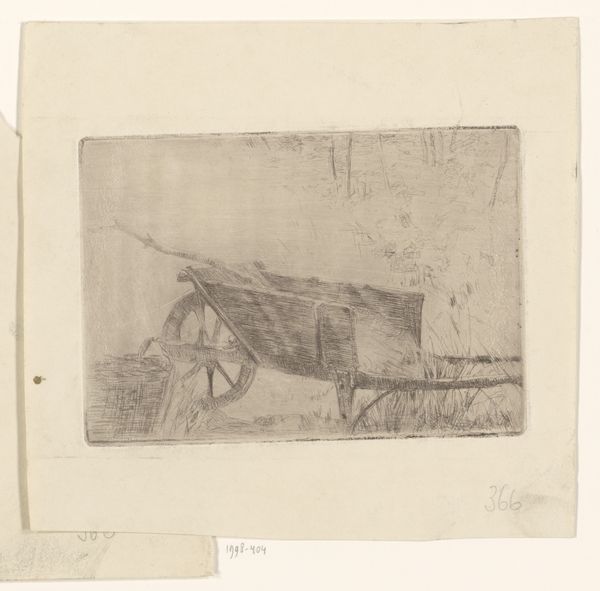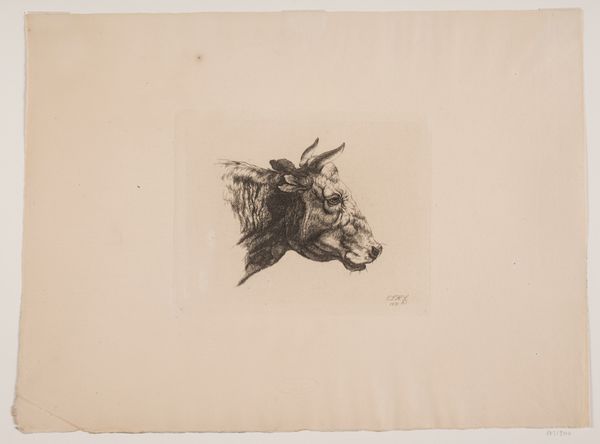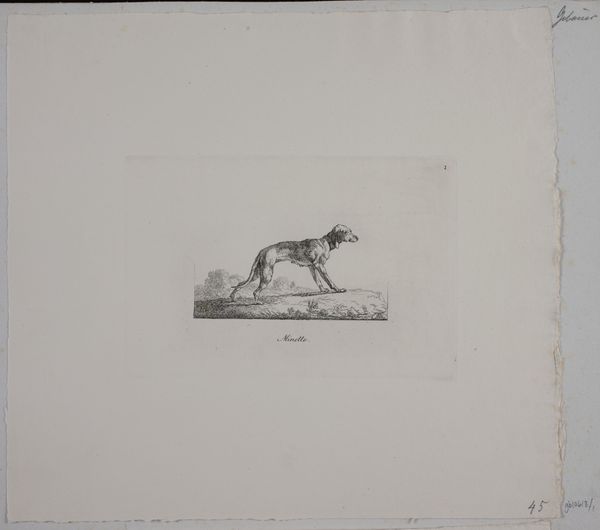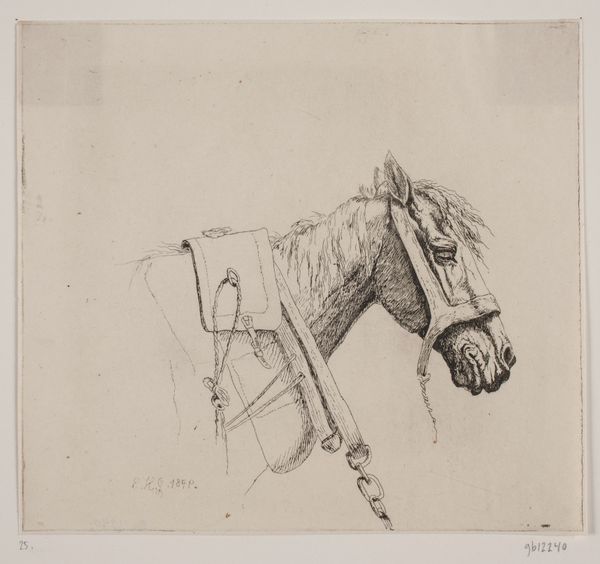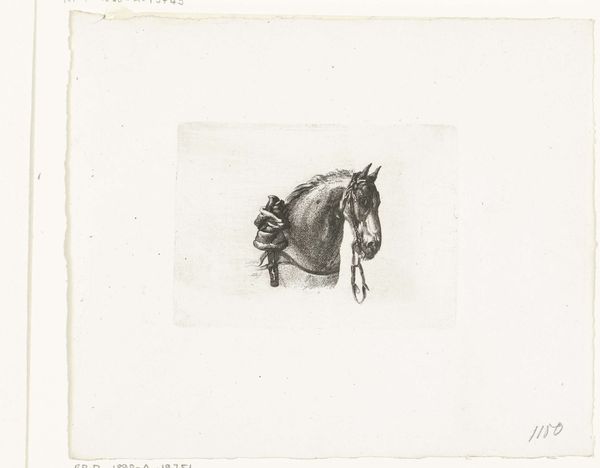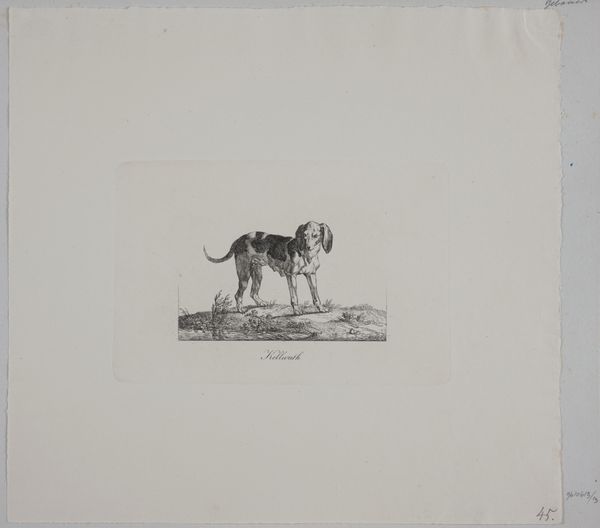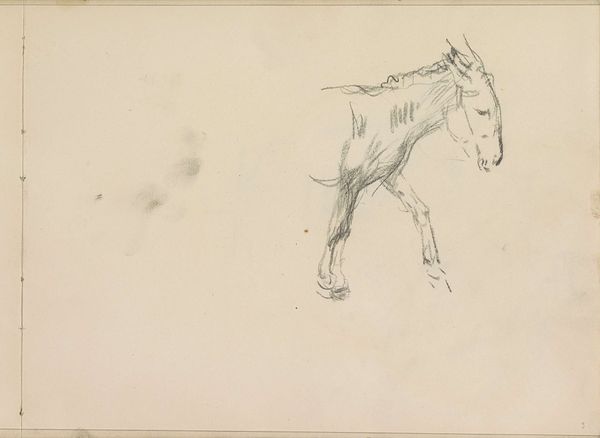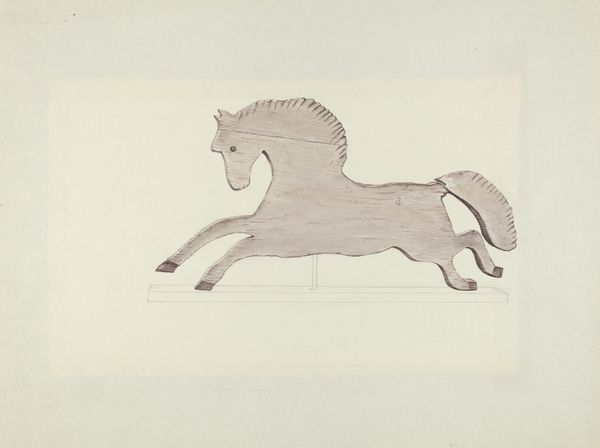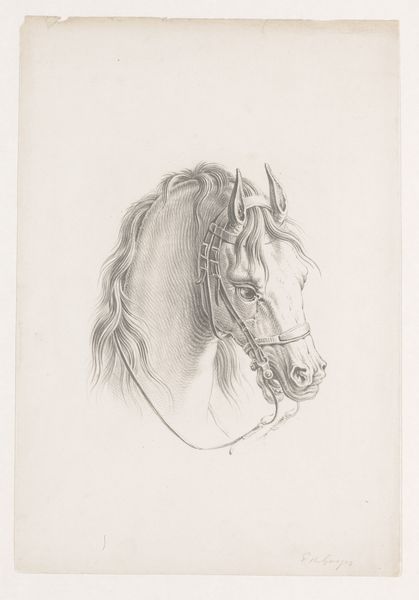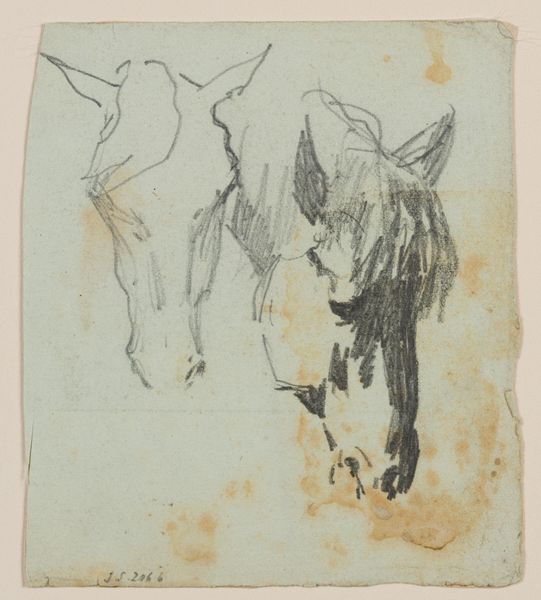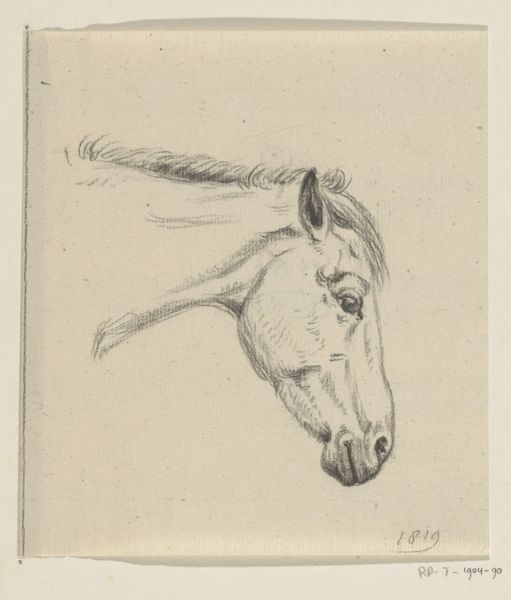
drawing, print, ink, engraving
#
portrait
#
drawing
#
animal
# print
#
ink
#
engraving
#
realism
Dimensions: 212 mm (height) x 165 mm (width) (plademaal)
Curator: We are looking at "Et hestehoved", or "A Horse's Head", a captivating print by Emmerik Høegh-Guldberg, created around 1849. It resides here at the SMK. Editor: Ah, I see him! He looks rather forlorn, doesn’t he? A smudge of ink against so much negative space—lonely but somehow noble. Curator: Precisely! The engraving, executed in ink, employs realism as a mode, evidenced by the precise rendering of the horse's features, his tack, and the texture of his mane. Note the detailed lines used to convey light and shadow. Editor: You know, he makes me think of an old warhorse. Dignified but worn down by circumstance. Is that the Romantic in me talking? Perhaps… the way the artist used stark contrasts amplifies the pathos. It is just a head and partial tack, but tells so much about a relationship. Curator: I would say that your assessment speaks to the emotional narrative skillfully embedded within a seemingly simple portrait. The composition, predominantly the horse's head and neck with simplified harnesses against a broad background, concentrates the viewer’s attention to certain areas within this representation. Editor: And that concentration certainly elicits introspection! One considers the role horses have played throughout human history, their sacrifices, their unwavering loyalty. It seems Høegh-Guldberg captures more than mere equine anatomy. There is something intrinsically human in the horse's gentle eye. Curator: Such interpretation resonates with contemporary reception where animal portraiture engaged symbolic values beyond just physical semblance, and with Realism's focus on accuracy. I will suggest that Guldberg here attempts an early study of animal behavior as well. Editor: Indeed. I initially felt sadness looking at the drawing, but there is tenderness here, too—respect. A fine moment captured with relatively sparse technique that yields rather maximal results. Curator: A considered perspective—illuminating how this rather understated drawing carries resonating implications in affect, and in historical scope.
Comments
No comments
Be the first to comment and join the conversation on the ultimate creative platform.
